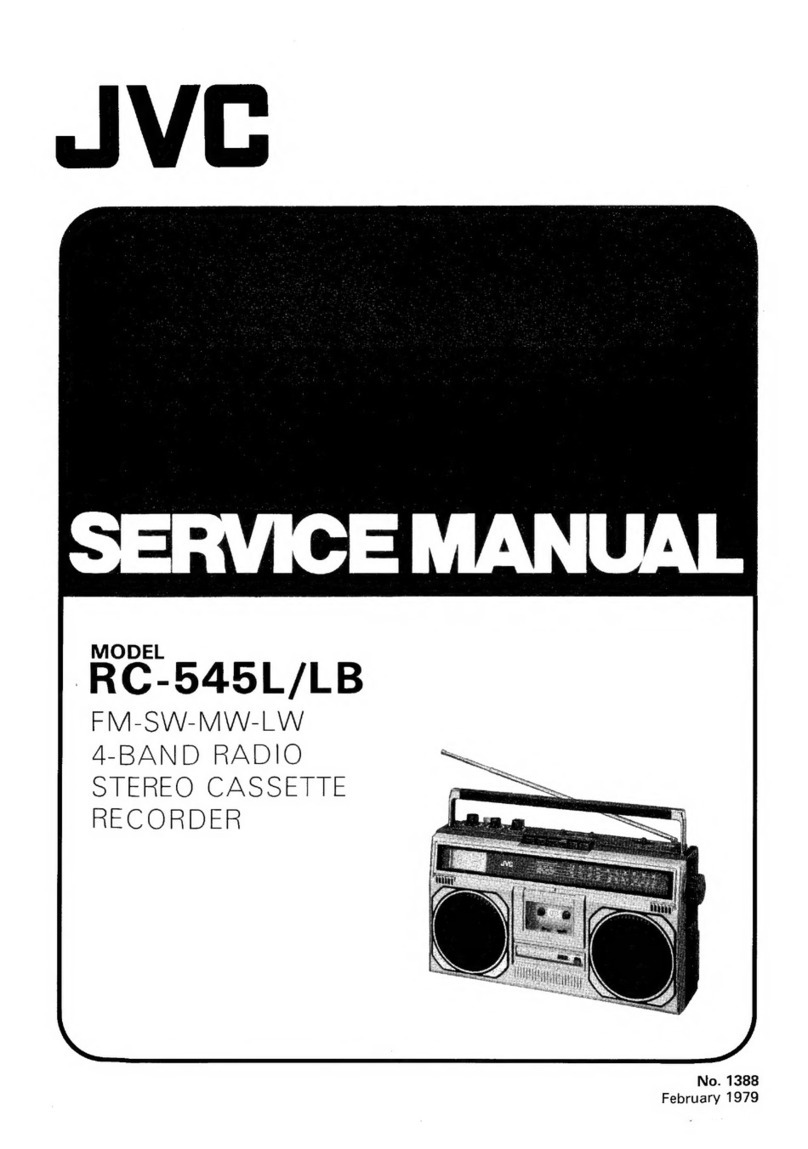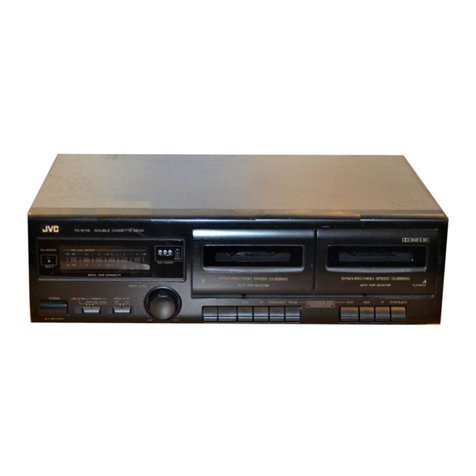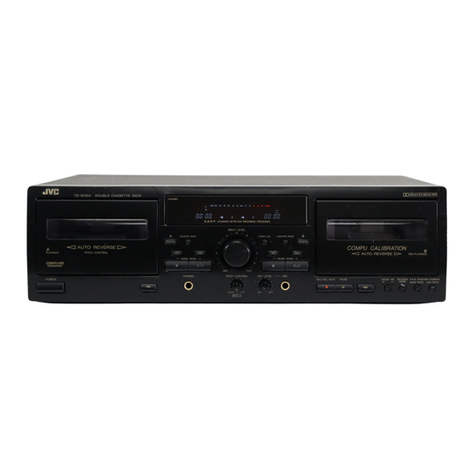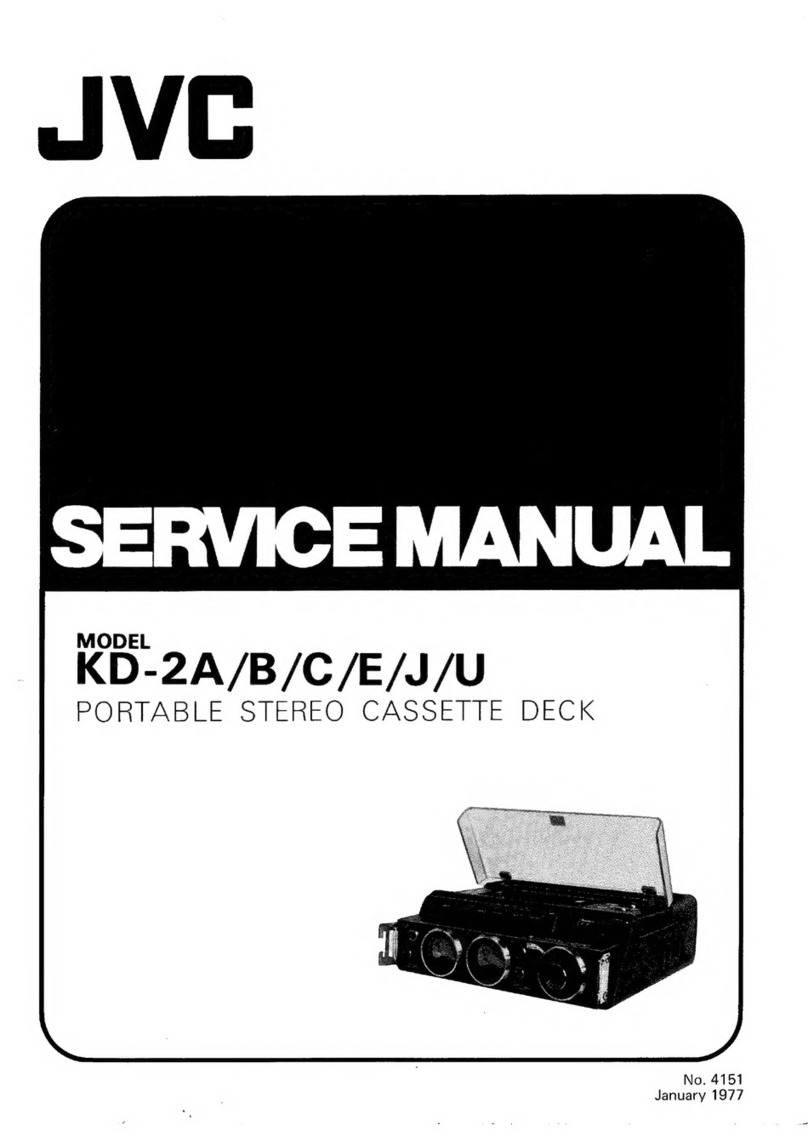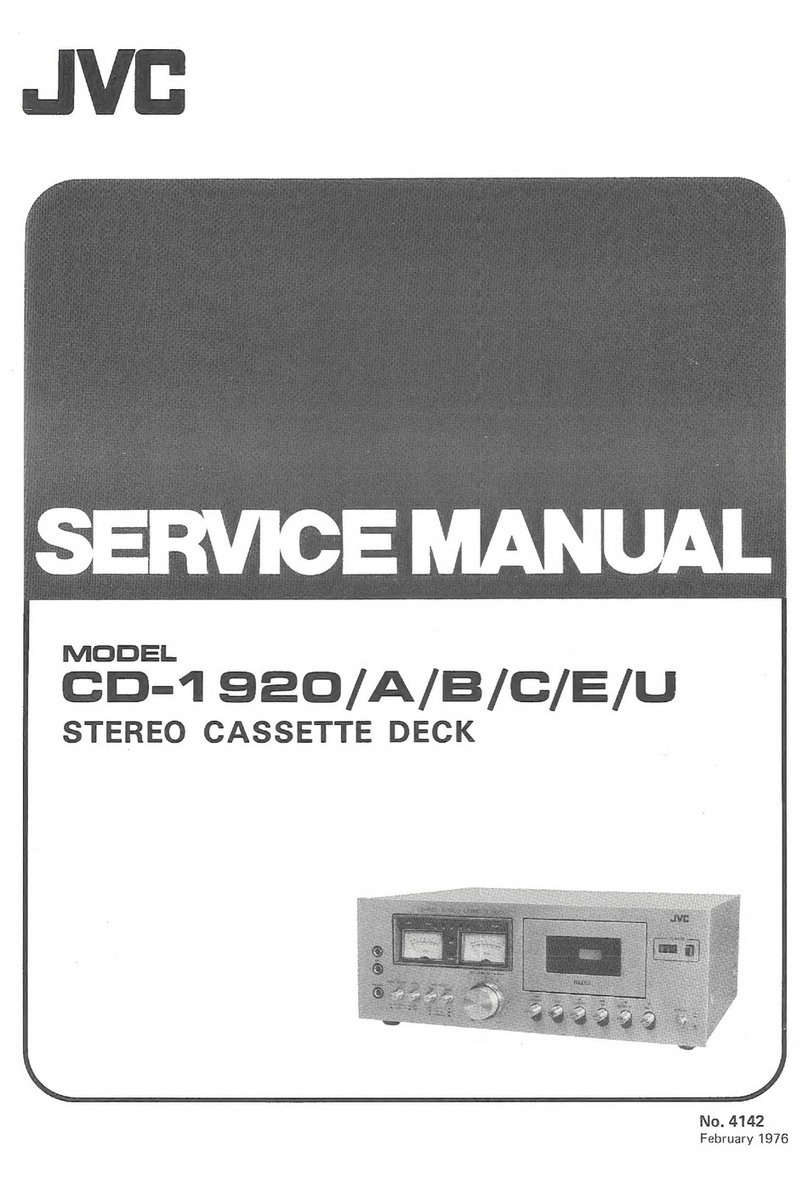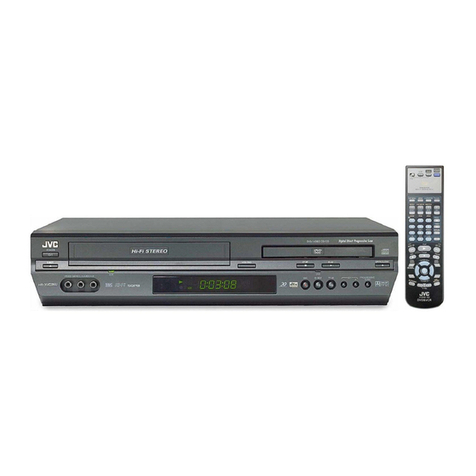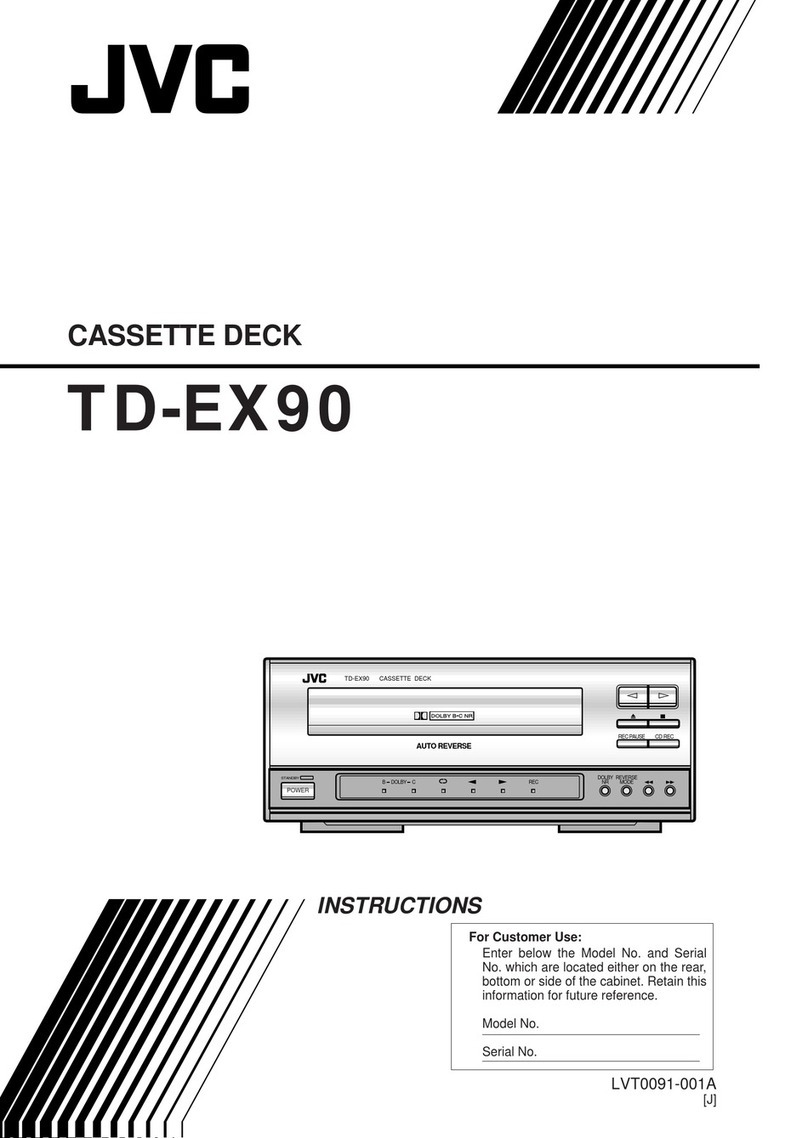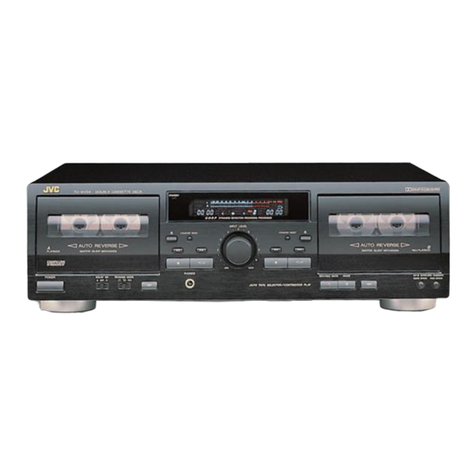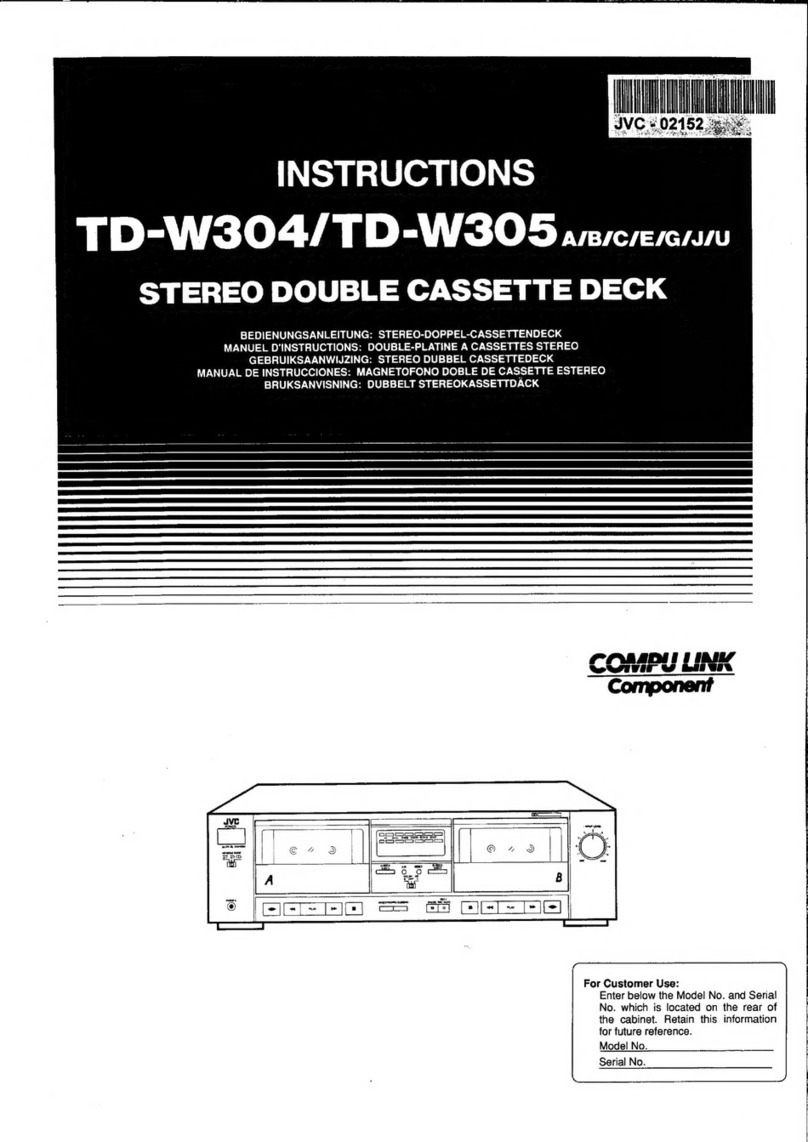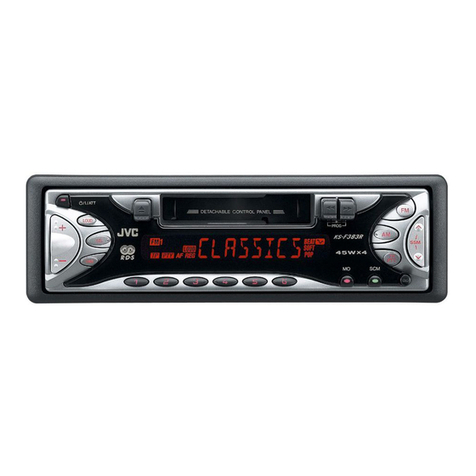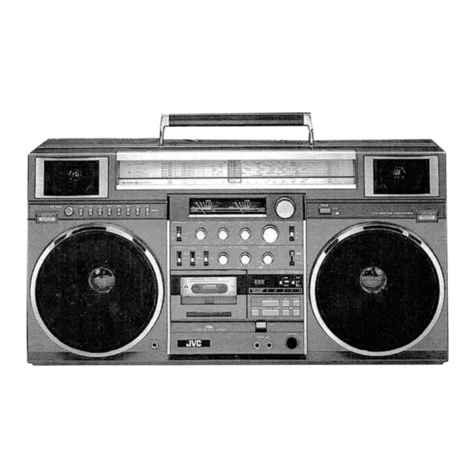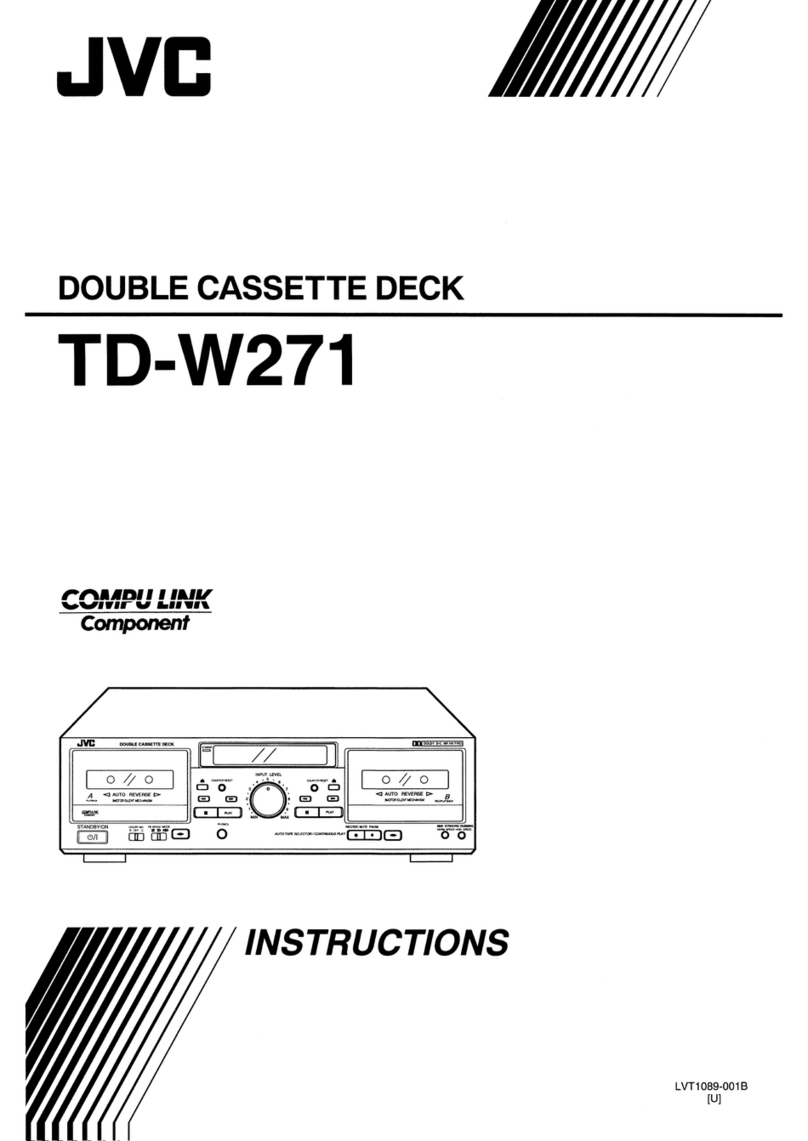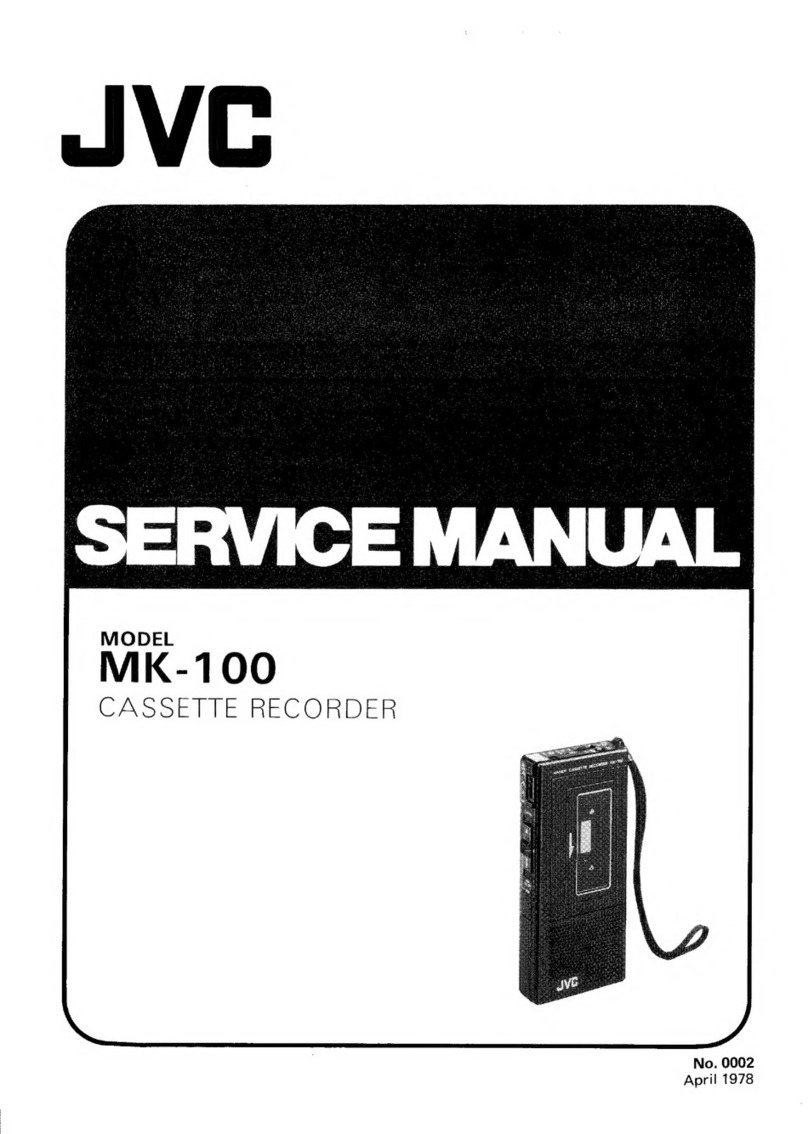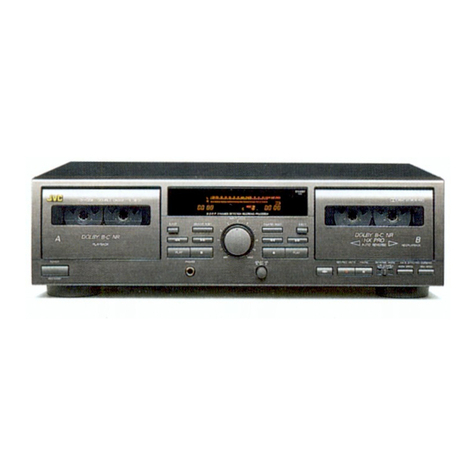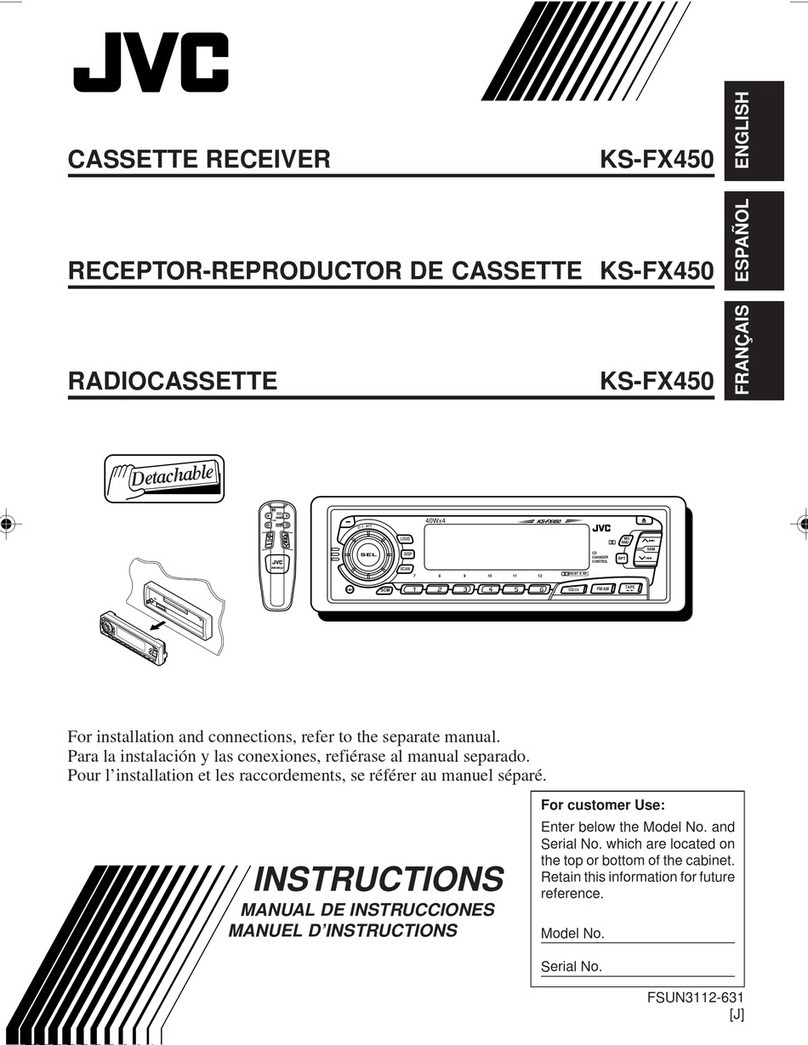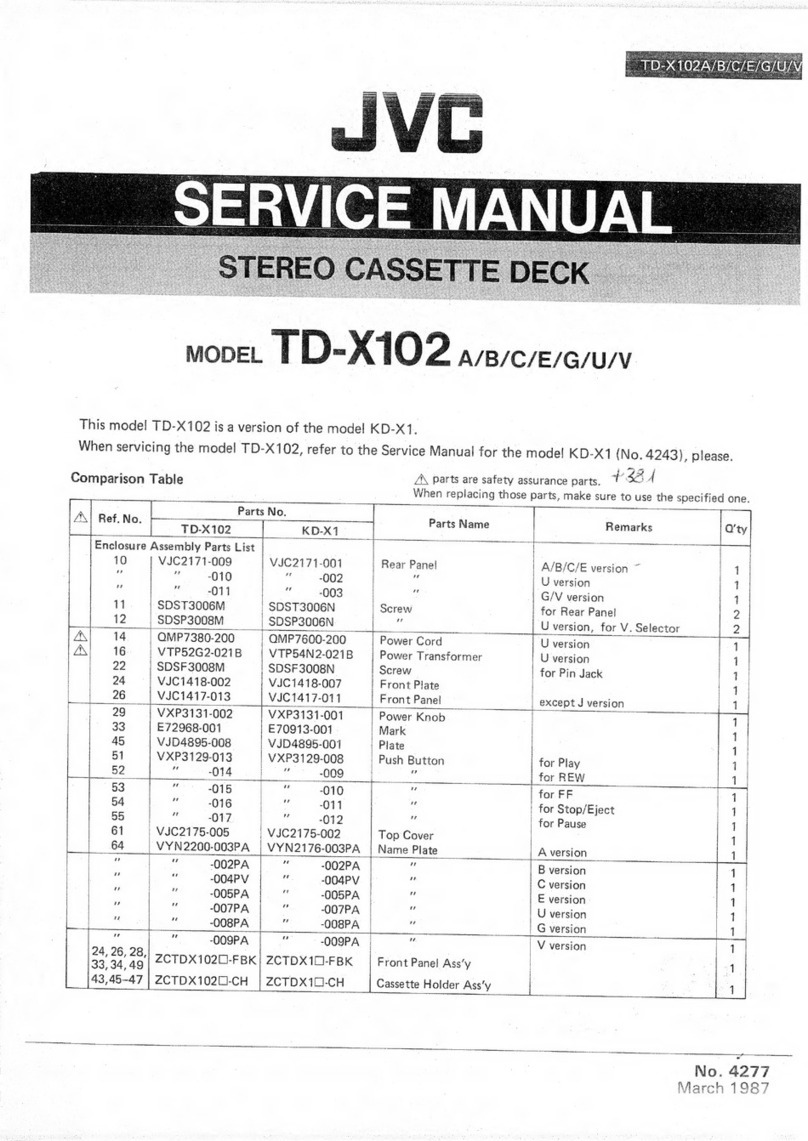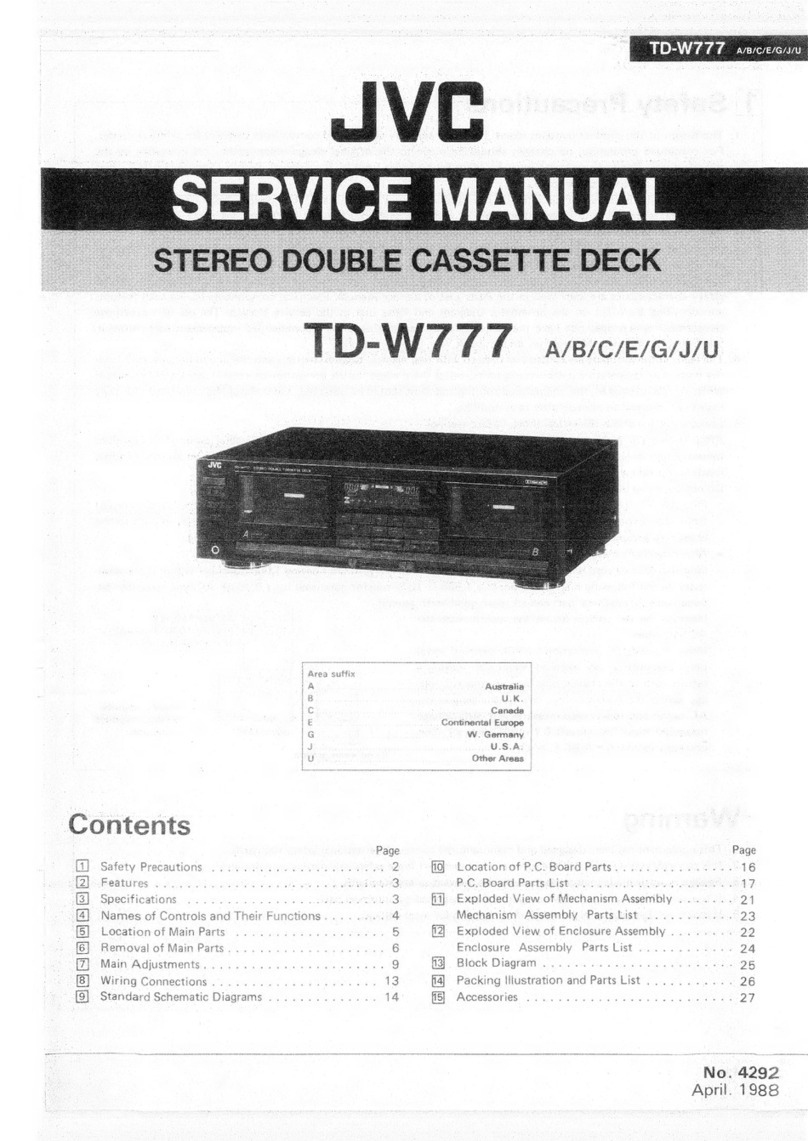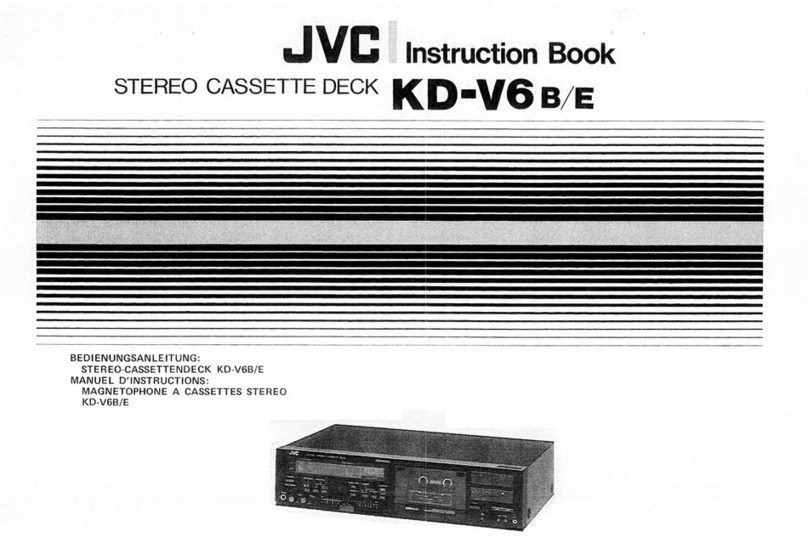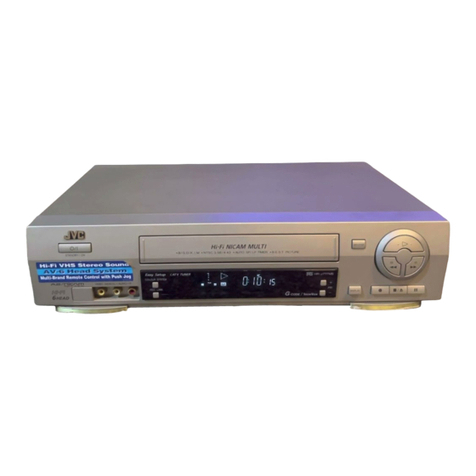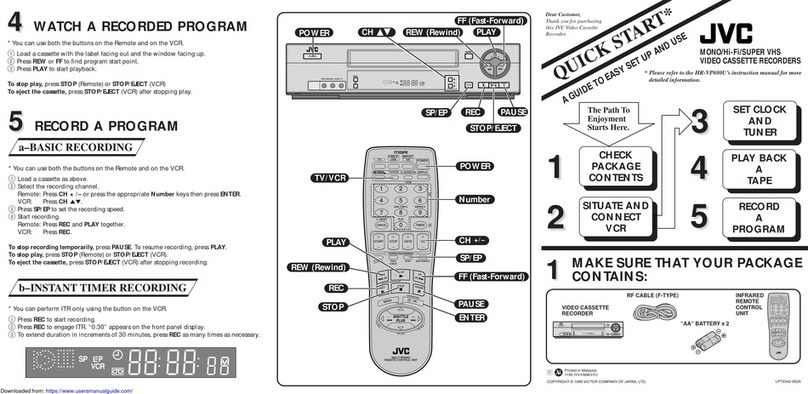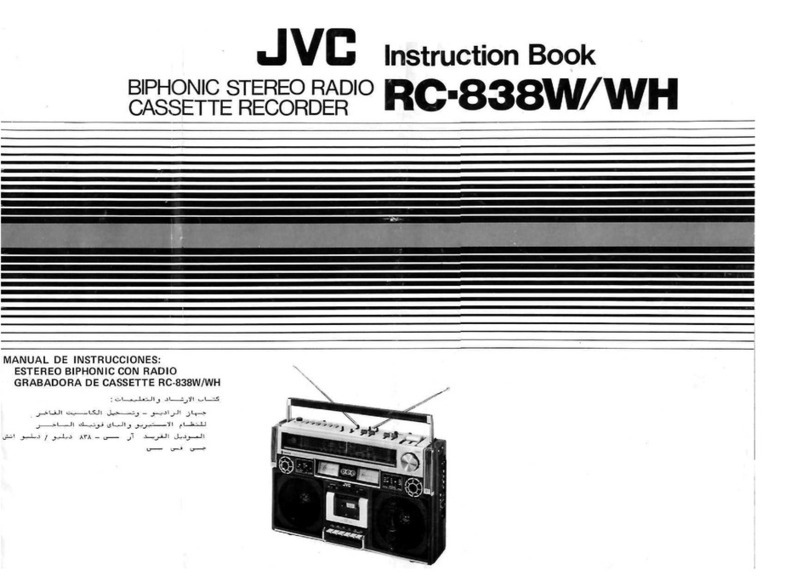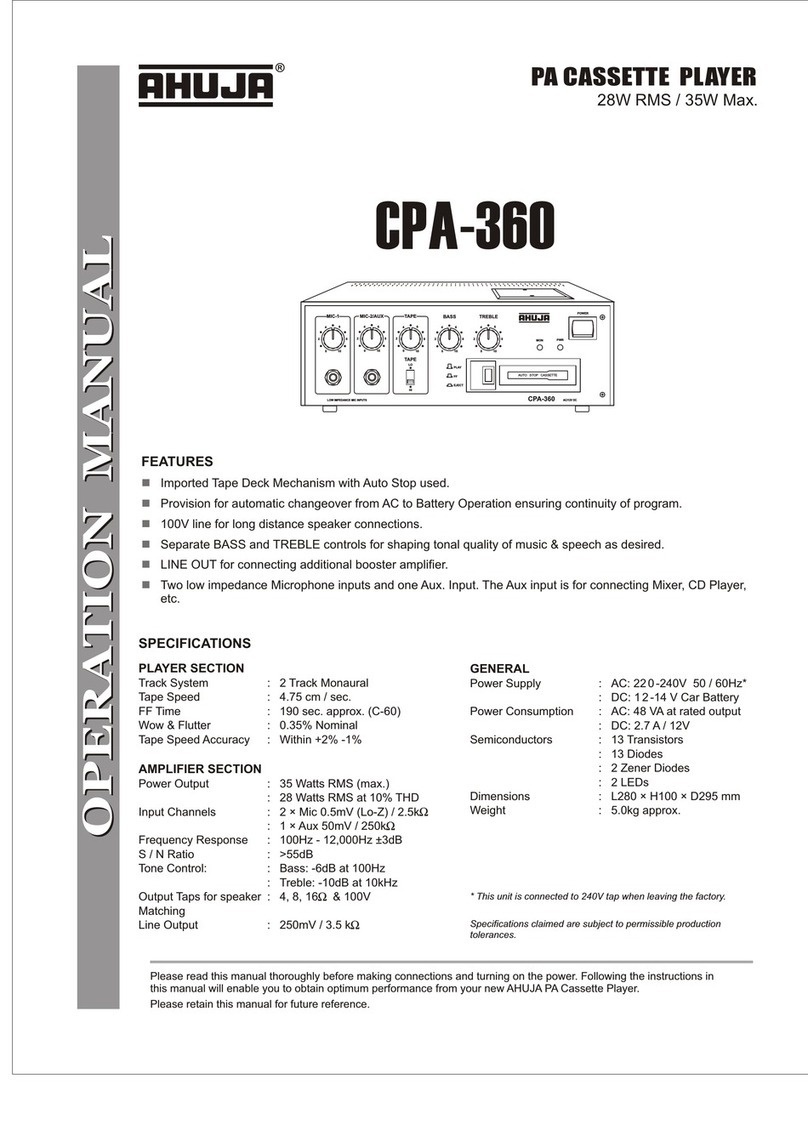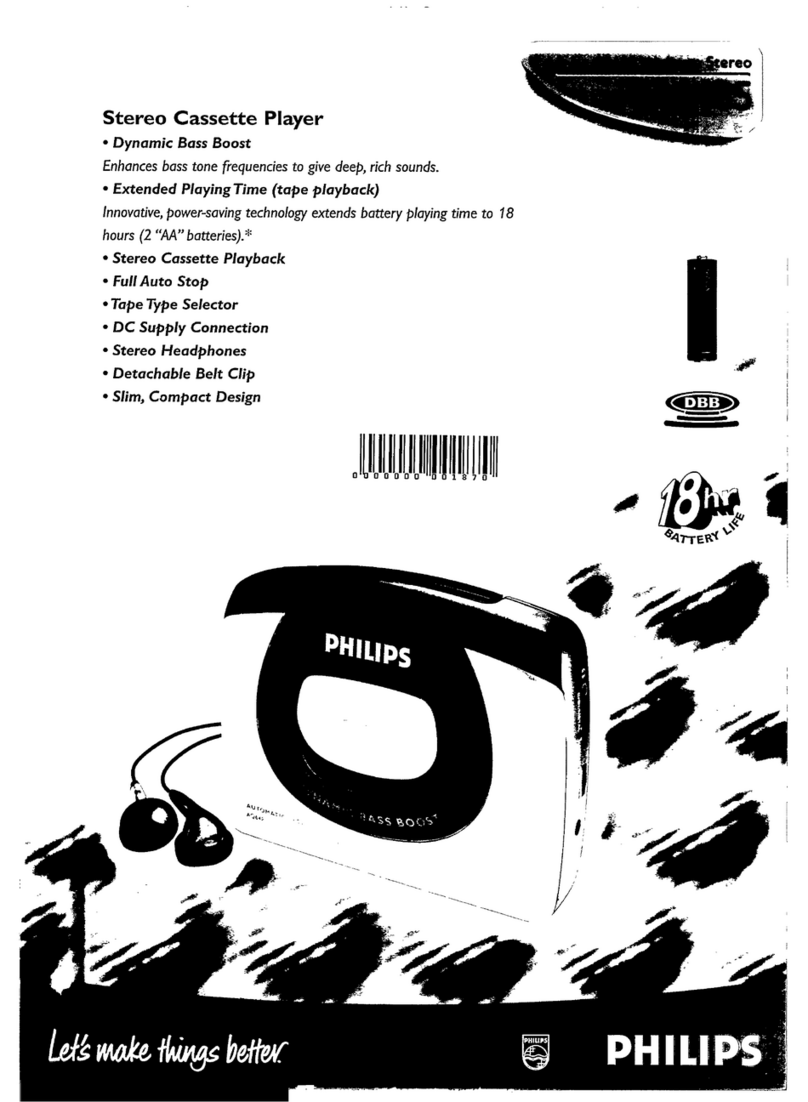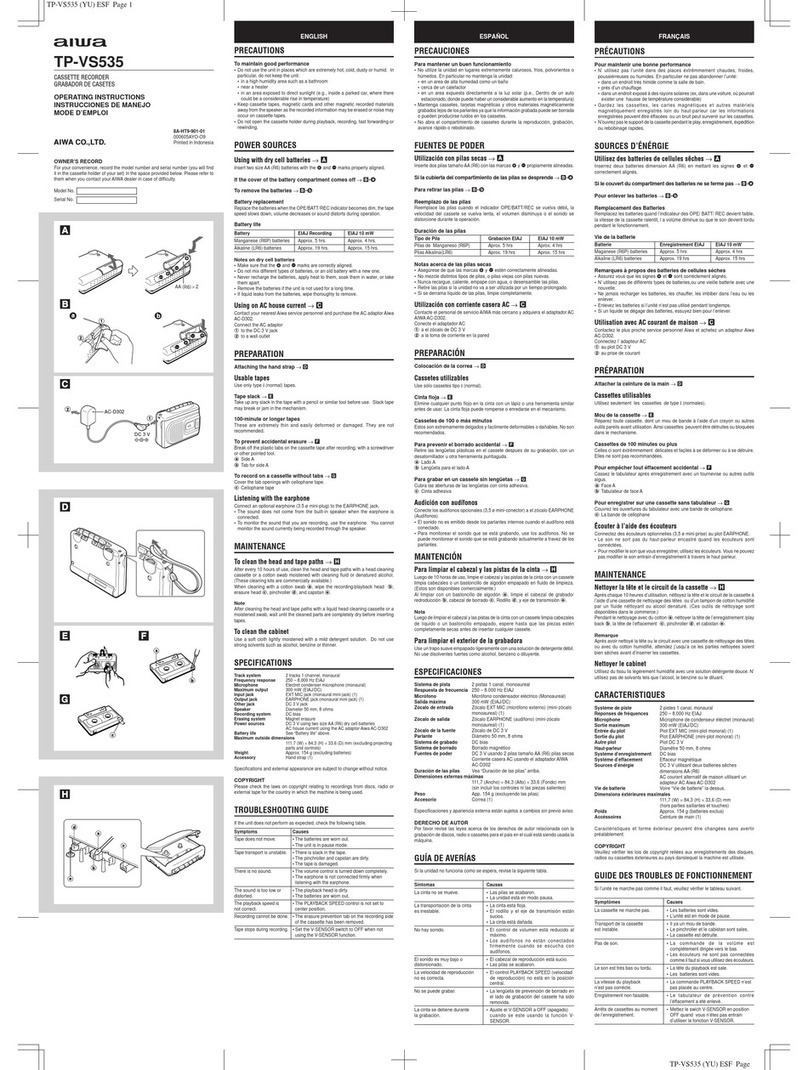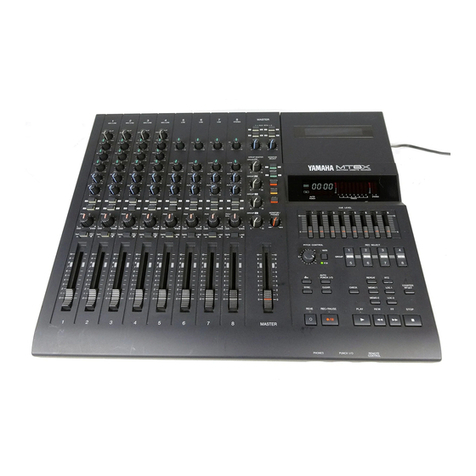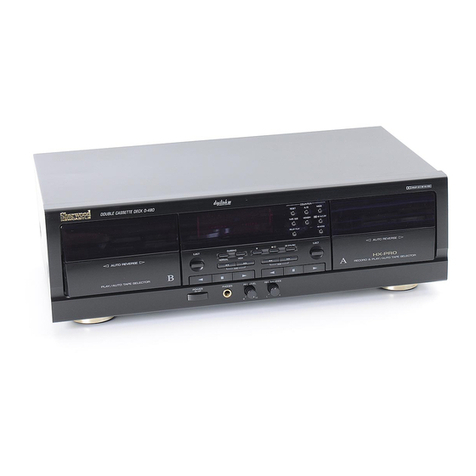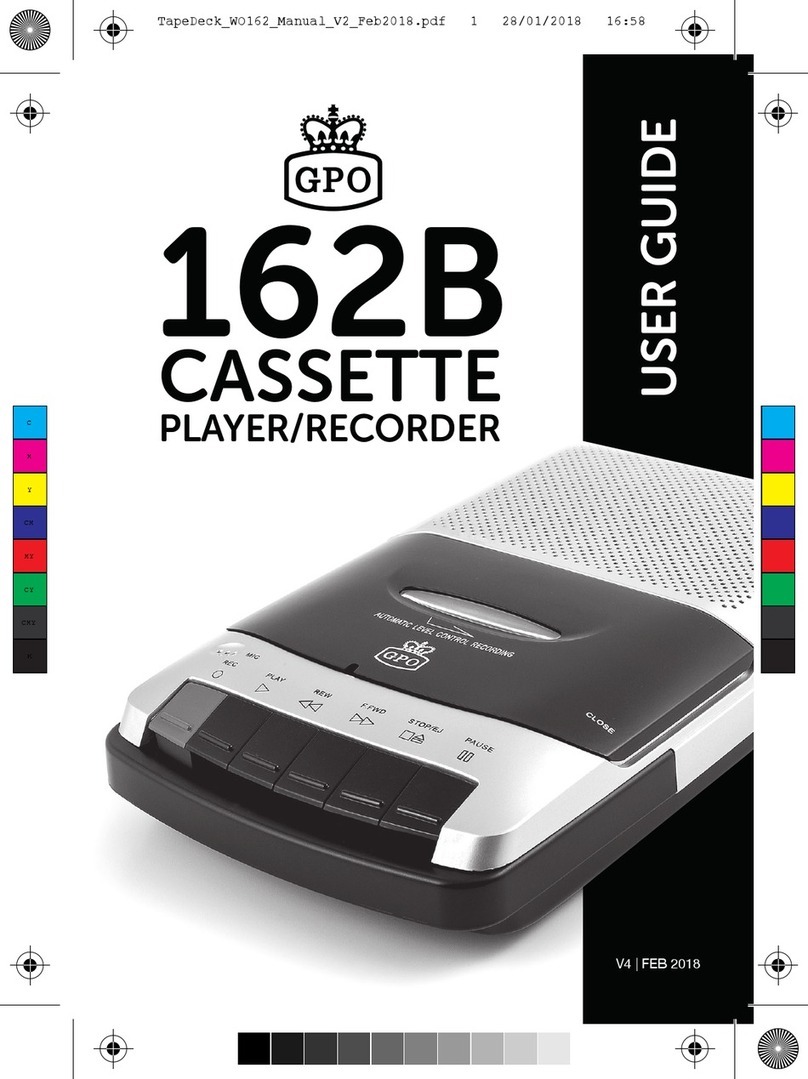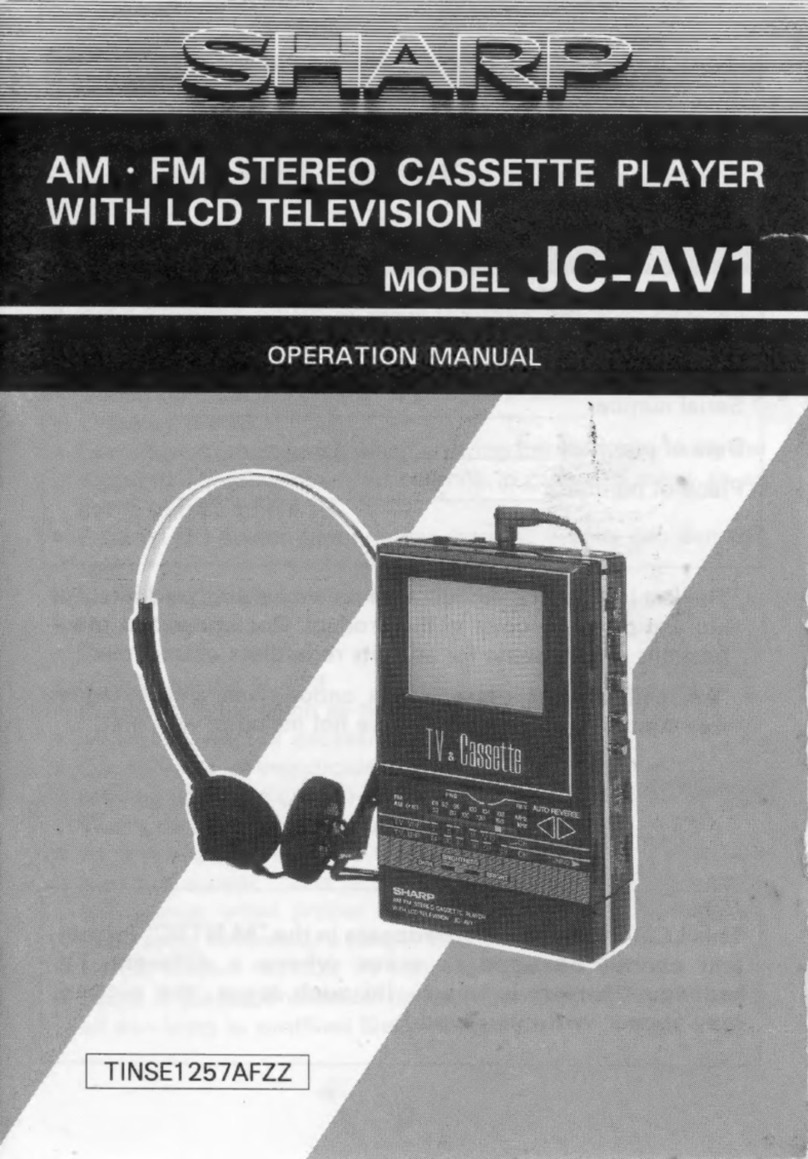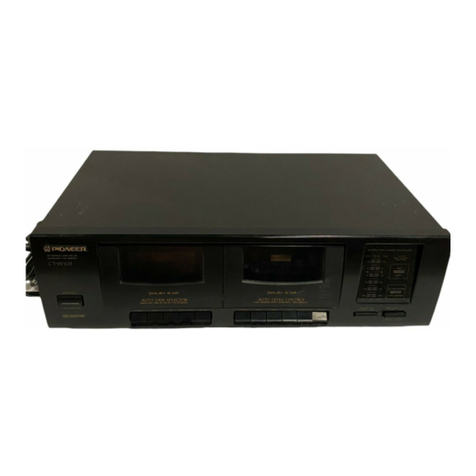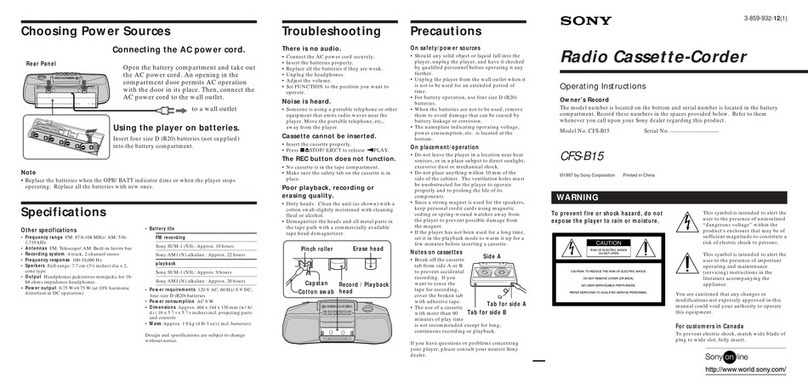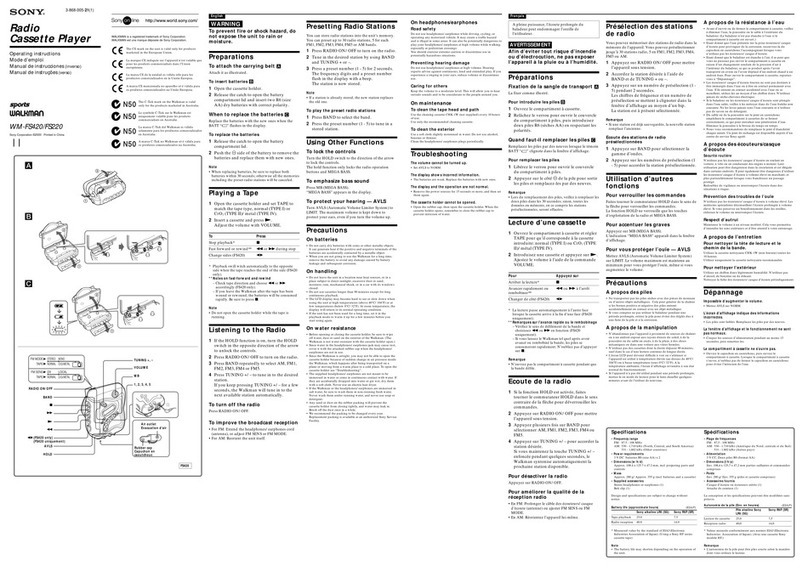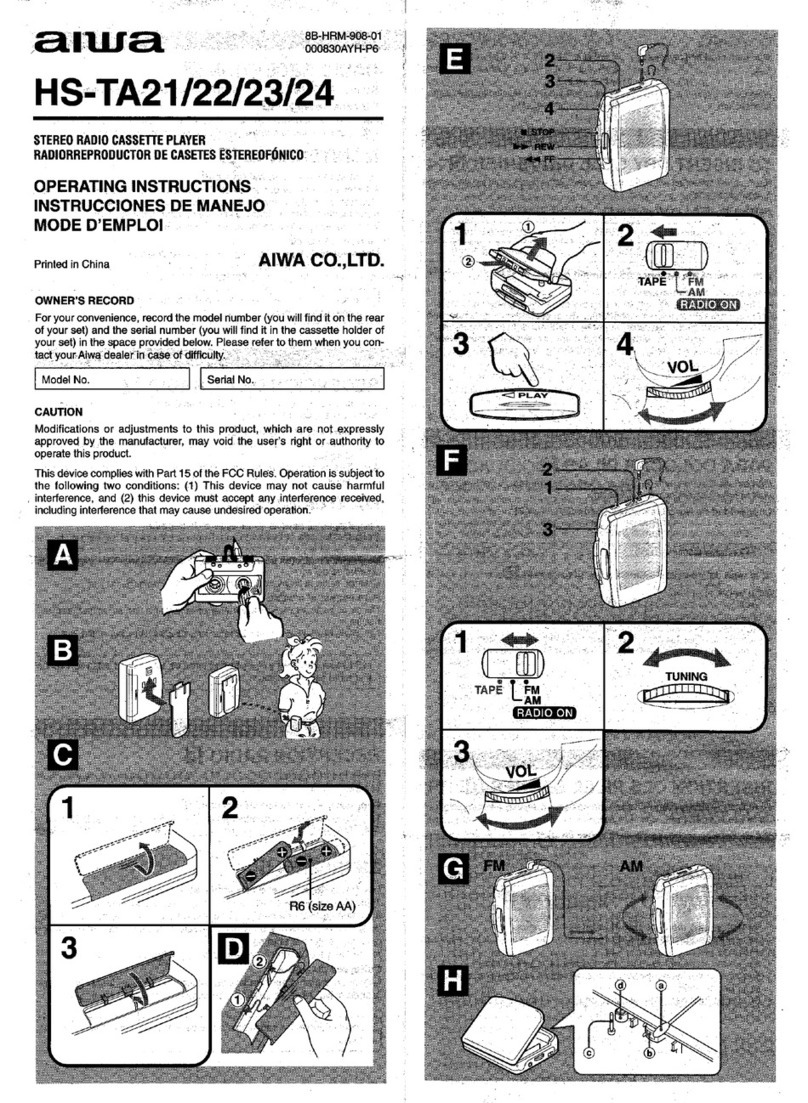
TEKNISKA
DATA
(Version
E)
Typ
Sparsystem
Banhastighet
Frekvensomfang
Stdravstand
Férbattring
av
max
utniva
Svaj
Kanalseparation
Overhérning
Harmonisk
distorsion
Tonhuvuden
6
(No.
4325)
:
Dubbelt
strereokasset-
dack
:
4
spar,
2
kanaler
:
4,8
cm/sek
(normal
hastighet)
9,5
cm/sek
(hég
hastighet)
:
(-20
dB
inspelning)
Metalitband;
20
—
17.000
Hz
(DIN)
30
—
16.000
Hz
(+
3
dB)
Kromband;
20
—
16.000
Hz
(DIN)
30
—
15.000
Hz
(+
3
dB)
Normalband;
20
—
16.000
Hz
(DIN)
30
—
15.000
Hz
(+3
dB)
:
58
dB
(S
=
315
Hz,
k3
=
3%
N
=
A-vagt,
met-
allband)
Stéravstandet
férbat-
tras
med
omkring
15
dB
vid
500
Hz
och
med
max.
20
aB
vid
4
kHz
—-
10
kHz
med
Dolby
C.
Det
for
bat-
tras
med
5
dB
vid
1
kHz
och
med
10
dB
vid
éver
5
kHz
med
Dolby
B.
:
4
dB
vid
10
kHz
med
Dolby
C
=
+0.2%
(DIN)
:40
dB
(1kHz)
=
60
dB
(1
kHz)
2
k3;
0,8%
(metaliband,
315
Hz
0
VU)
:
Dack
A;
METAPERM
huvud
fér
avspeining
x
1,
Dack
B;
META-
PERM
huvud
fér
Autres
prises
“COMPU
LINK-1
/SYNCHRO
x
2
Alimentation
‘
Version
A
:
240
V
CA,
50/60Hz
Version
C/J
:
120
V
CA,
60
Hz
Version
U
:230/127/110
V
CA,
50/60
Hz
Consommation
:17
W
avec
alimenta-
tion
en
circuit
1,6
W
avec
alimenta-
tion
hors
circuit
Dimensions
(Lx
Hx
P)
2435
x
133
x
328
mm
Poids:
4,8
kg
Accessoires:
Fil
€
broches...........
2
Fil
de
télécommande....1
Otros terminales
:
COMPU
.LINK-4
ISYNCHRO
x
2
Alimentacion
Version
A
:
CA
240
V,
50/60
Hz
Version
C/J
:
CA
120
V,
60
Hz
Version
U
:
CA
230
/127/110
V,
50/60
Hz
Consumo
:
17
W
encendido
1,6
W
apagado
Dimensiones
(An
x
Al
x
F)
:
435
x133
x
328
mm
Peso
:
4,8
kg
Accesorios
:
Cordones
con
clavijas
t
eesndaseesiiesctaaevenensseaeee
2
Cable
de
mando
a
dis-
TANCIA
oo...
eee
1
Présentation
et
caractéristiques
modifiables
El
disefio
y
las
especificaciones
estan
sujetos
sans
préavis
a
cambio
sin
aviso.
in/avspelning,
2
spalts
feriithuvud
vor
radering;
Kombinationshuvud
x
1
Motorer
:
Elektroniskt
styrd
lik-
strémsmotor
fér
kap-
stan/spole
x
1
Likstromsmotor
fér
sna
bbspoining
x
1
Likstr6msmotor
for
fack
x
1
(Fér
bade
dack
A
och
B)
Snabbspolningstid
:Ca
110
sek.
(C-60
kassett)
Ingangar
LINE
IN
:
Inkanslight;
(x
1
krets)
80
mV
(0
VU)
Ingangsimpedans;
50
kQ
Utgangar
LINE
OUT
:
Utgangsniva;
300
mV
(0
VU)
(x
1
krets)
Utgangsimpedans;
5
kQ
PHONES,
1
st
:
Utgangsniva;
0,3
mW/8
Q
(0
VU)
Passande
impedans;
8Q-1kQ
Andra
kontakter
:
COMPU
LINK-1/
SYN-
CHRO
x
2
Strémart
:
~
230
V,
50/60
Hz
Effecktforbrukning
:
17
W
(Standby-lage;
1,6
W)
Matt
(B
x
H
x
D)
1435
x133
x
328
mm
Vikt
14,8
kg
Tillbehér
:
Kabel
med
stiftpluggar
ncteaesestuaivamvoseester
taut
2
Raitt
till
Andringar
férbehalles.
